How to create a custom CRM for your business from scratch?
Learn step by step on how to build a custom sales CRM for your business, regardless of your function or industry. Completely no-code.
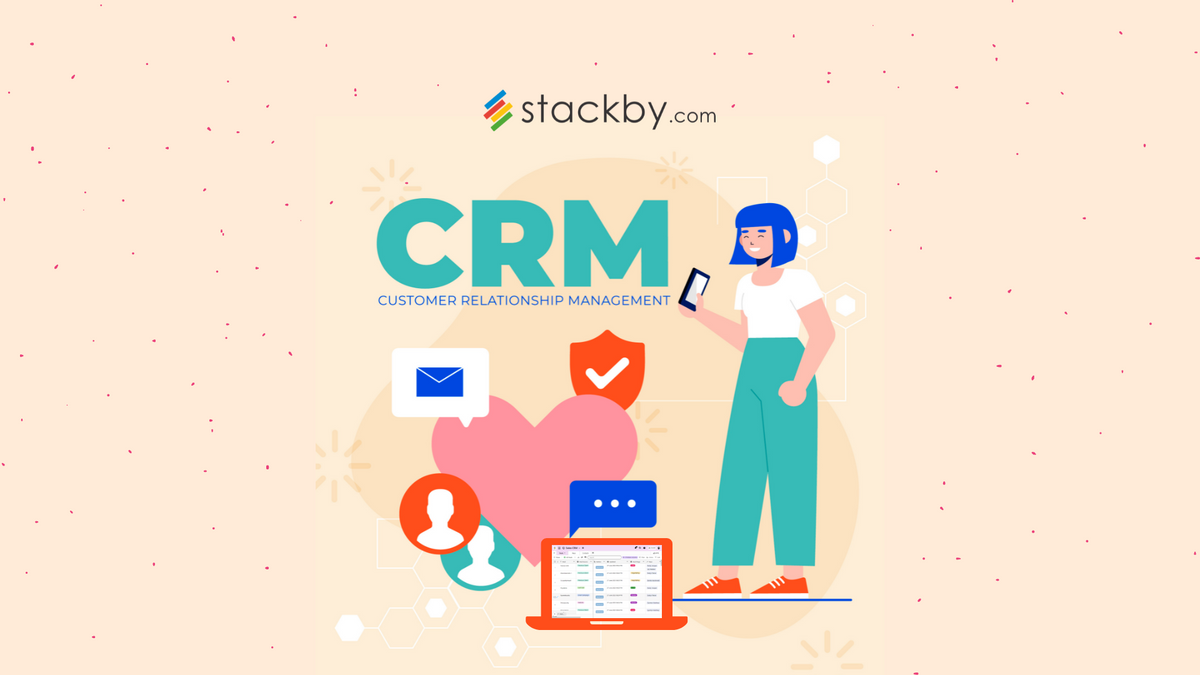
In today's fast-paced business landscape, maintaining strong customer relationships is crucial for long-term success. That's where Customer Relationship Management (CRM) systems come into play.
It is evident from reports that some forms of web-based CRM tools are used by 33% of small businesses.
A CRM serves as a central hub for organizing and managing customer data, streamlining sales processes, and fostering personalized interactions.
In this definitive blog post, we will delve into the world of CRM systems, highlighting their importance and key elements and providing a step-by-step guide on how to create your own CRM from scratch.
By the end, you'll be well-equipped to take your business to new heights of efficiency and success. So, let's get started:
What is a CRM?
A CRM or Customer Relationship Management, is a software tool or platform designed to manage and analyze customer interactions throughout the customer lifecycle.
It consolidates customer data into a centralized database, including contact information, purchase history, communication preferences, and more, enabling businesses to foster stronger relationships and provide personalized experiences.
Importance of a CRM
A CRM system is a game-changer for businesses of all sizes. Here are some key reasons why investing in a CRM is highly important:
- Enhanced Customer Relationships: By having a 360-degree view of customer interactions, you can understand their preferences, pain points, and requirements better, enabling you to provide personalized and targeted services.
- Improved Sales and Marketing: A CRM system helps you streamline sales and marketing efforts by enabling lead tracking, automated follow-ups, and personalized campaigns, leading to increased conversion rates.
- Data-Driven Decisions: With valuable insights from customer data, you can make informed decisions, identify trends, and forecast future sales opportunities.
- Increased Efficiency: Automating mundane tasks, such as data entry and follow-ups, frees up time for your team to focus on high-value activities, improving overall efficiency.
- Customer Retention: Happy customers are more likely to become repeat buyers. A CRM system aids in nurturing customer loyalty through personalized interactions and exceptional support.
Key Elements to Add to a CRM
Building a comprehensive CRM system requires careful consideration of the following key elements:
- Contact Management: A vital component of any CRM is the ability to store and manage customer contact information efficiently.
- Sales and Leads Tracking: Track leads throughout the sales pipeline, enabling your team to identify bottlenecks and prioritize leads effectively.
- Communication Tools: Integrate communication channels like email, VoIP phone service, and social media, allowing seamless customer interactions.
- Task and Activity Management: Stay organized by creating tasks and setting reminders for follow-ups, meetings, and other vital activities.
- Reporting and Analytics: Generate insightful reports and analytics to measure your team's performance, identify trends, and optimize processes.
- Integration Capabilities: Ensure your CRM can integrate with other essential business tools such as marketing automation, accounting, and customer support platforms.
Step-by-Step Guide to Building a CRM
Now, let's dive into the step-by-step process of creating a customized CRM for your business:
Step 1: Data Consolidation
The first step in designing an efficient CRM workflow is data consolidation. It involves importing data from various sources, such as spreadsheets, forms, and tools, into the CRM system.
Utilize custom lead forms, spreadsheet importers, integration platforms, and data validation techniques to ensure the accuracy and integrity of the imported data. It is essential to eliminate duplicates and maintain consistency during this process.
Eg. This is how you can import data in Stackby via CSV or Excel Importer
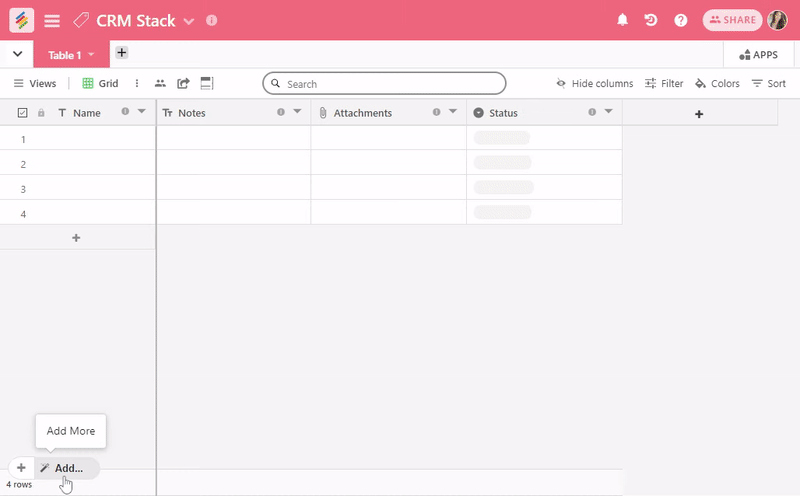
Step 2: Data Management
Once the data is imported, the next step is to manage and organize it effectively within the CRM system. Create custom fields that align with your business needs and objectives. Create multiple tables - Companies (Leads), Contacts, Opportunities, Tasks in your CRM.
Establish relationships between these different tables within the CRM to set up connections and gain a holistic view of customer interactions and sales KPI metrics. Create multiple views like Kanban (sales pipeline) or Calendar (follow-ups) & set user permissions and collaboration settings to ensure data security and enable efficient teamwork.
Here’s how your CRM tables will look like in Stackby:
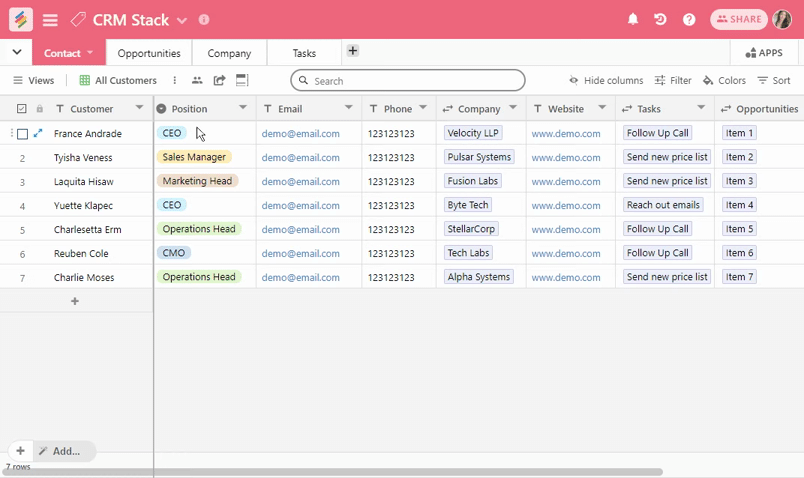
Step 3: Data Reporting
Data reporting is crucial for gaining insights and making informed decisions. Configure dashboards, charts, goal tracker, summary boxes and pivot tables within the CRM to visualize and analyze data. Identify key metrics and performance indicators that align with your business goals.
Monitor these metrics regularly to track progress and identify areas for improvement. By having comprehensive data reporting capabilities, you can make data-driven decisions and optimize your CRM strategy.
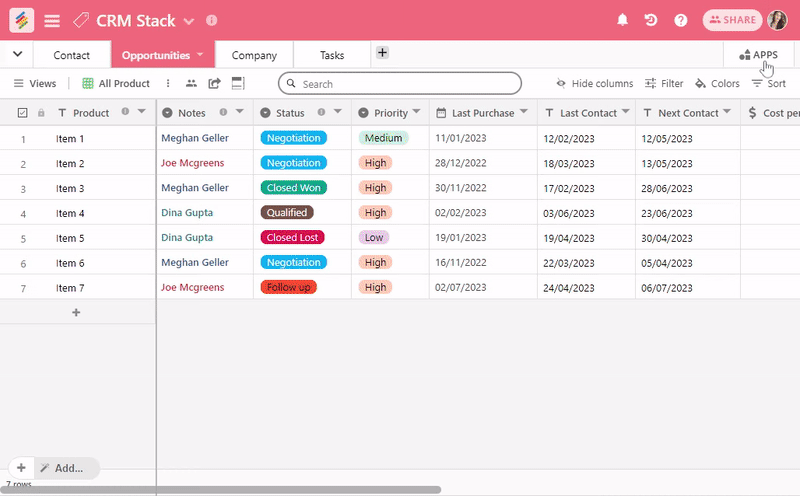
Step 4: Data Automation
Automation is a key component of an efficient CRM workflow. Identify repetitive manual processes that can be automated to save time and increase productivity.
Say you can create lead or contact sales forms that can be embedded onto your website to start collecting leads directly in your tables.
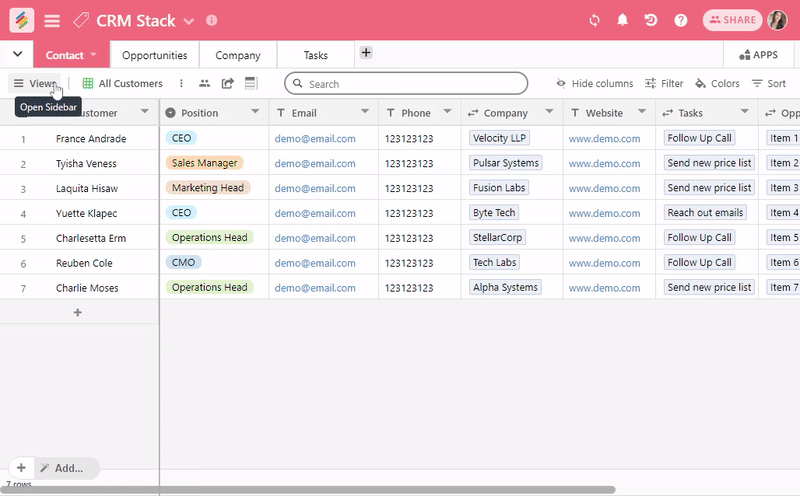
Or you can bring data from your existing CRM systems like Zoho, Close, Hubspot, Salesforce or more using Zapier or Pabbly connect to create a new row as soon as a new lead is added in that CRM. Or if you’re running paid campaigns on Facebook and Google, you can integrate lead forms directly with Stackby to automate your leads entry in the tables.
Utilize the built-in automation features provided by your CRM system, such as workflow automation or email automation to automate manual processes.
Additionally, explore external tools like API connectors to automate data entry and synchronization between different systems. By implementing automation, you can streamline processes and focus on higher-value tasks.
Step 5: Workflow Optimization
Continuously review and optimize your CRM workflow to ensure it remains effective and aligned with your evolving business needs. Regularly assess the performance of your CRM system and identify areas for improvement.
Seek feedback from users and stakeholders to gather insights on pain points and areas of inefficiency. Make necessary adjustments to streamline the workflow, enhance user experience, and maximize the benefits of your CRM system.
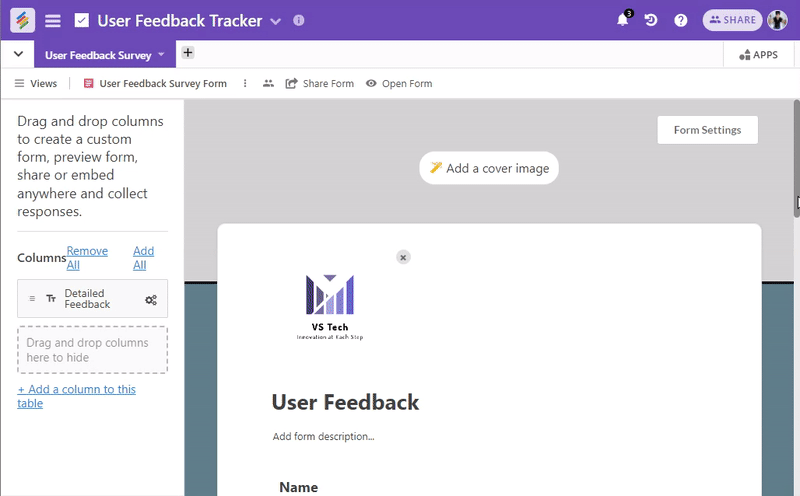
By following these five easy steps, businesses can create a CRM workflow that optimizes data consolidation, management, reporting, and automation.
Using Stackby as a Custom CRM
Stackby is a no-code spreadsheet-database hybrid that you can customize into a full-fledged CRM for your business, regardless of your industry. From a business coach, to a SME to large sales team across an enterprise, thousands of companies are using Stackby to create their own custom CRM.
Here’s a quick video guide on how you can create your own custom CRM using Stackby.
Watch the video below to gain practical insights, tips, and best practices:
4 Free Sales CRM Templates
1. Lightweight CRM

Stackby's lightweight crm template offers a streamlined and easy-to-use CRM solution suited for small businesses and entrepreneurs wanting efficient customer and deal management. This template allows users to efficiently organize contacts and deals, saving time by automating manual tasks.
2. Business Development CRM
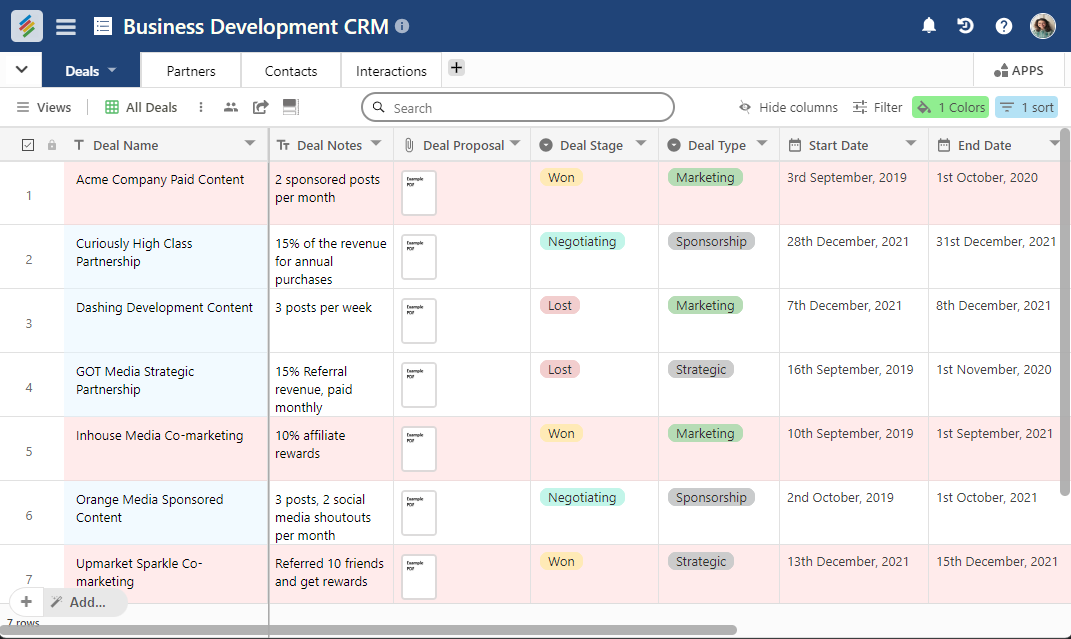
Stackby's Business Development CRM template is a powerful tool that helps firms effectively manage their business relationships and maintain a strong network of partners, affiliates, and sponsors. With features such as organized relationship outlines, tracking deal commencement, termination dates, etc. this template streamlines the entire process.
3. Personal CRM
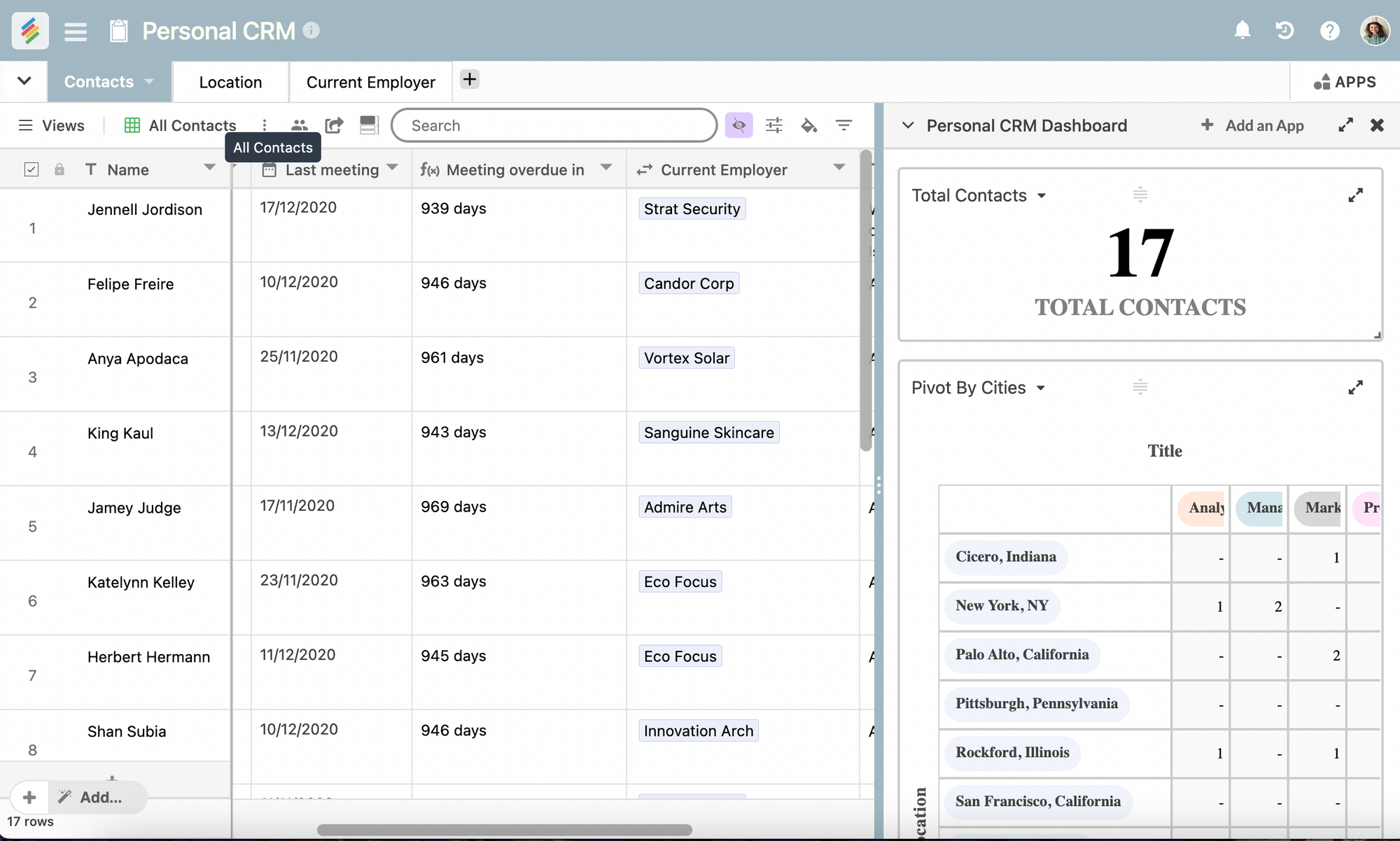
Stackby's Personal CRM template helps in elevating your personal network management. This free and customizable solution allows entrepreneurs, small business owners, freelancers, and individuals looking to enhance their work or career to efficiently organize and track their clients and relationships.
4. Sales CRM
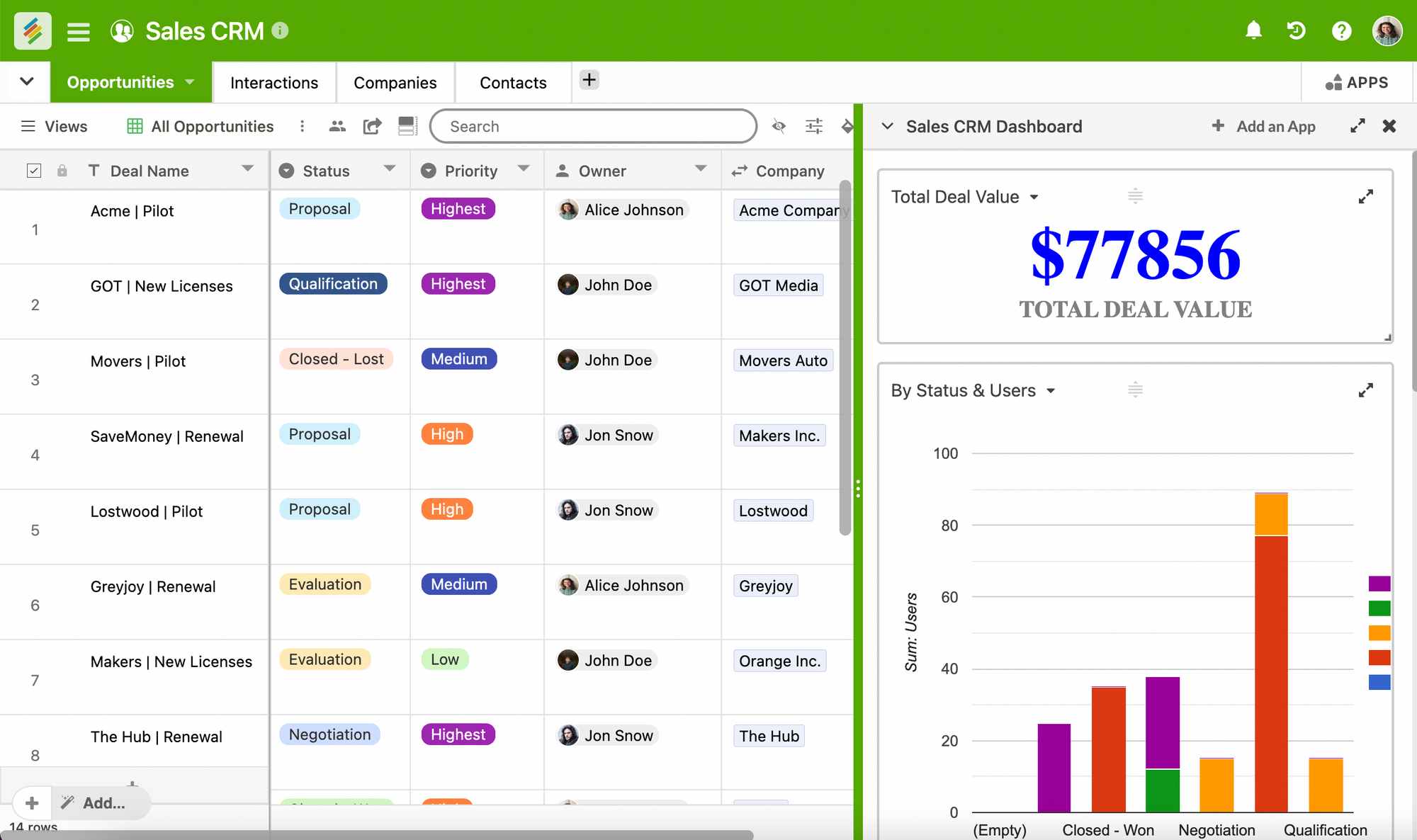
Stackby's Small Business CRM is a comprehensive solution designed to streamline customer relationship management. It allows you to track leads, manage sales pipelines, automate tasks, and collaborate effectively to drive growth and success.
Pick the most suitable one for your unique business requirements and kickstart your CRM-building journey today!
Final Thoughts
All in all, designing an effective CRM workflow involves careful consideration of data consolidation, management, reporting, and automation.
Following the steps outlined above, businesses can create a streamlined and efficient CRM system that empowers teams to manage customer relationships, gain valuable insights, and automate repetitive tasks.
Implementing a well-designed CRM workflow is a key driver for business success, enabling organizations to deliver exceptional customer experiences, boost productivity, and achieve sustainable growth.
Hopefully, you have found this detailed guide to be helpful!
Are you looking for an efficient CRM template? If yes, look no further than Stackby's customizable sales and CRM templates. Sign up for free on Stackby today.
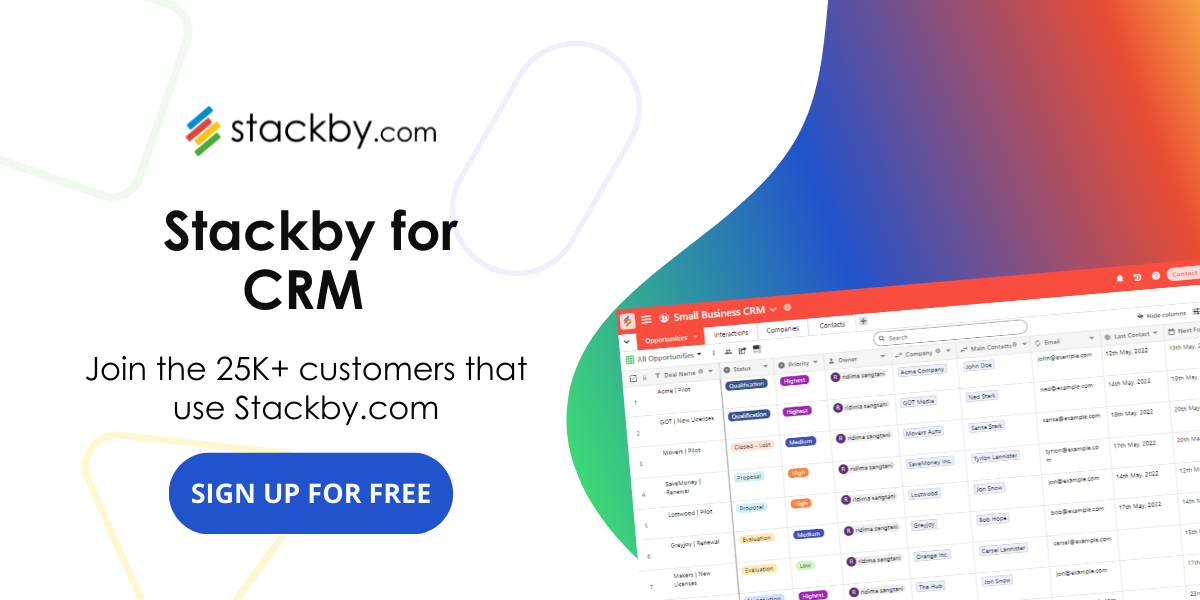

![A Simple Guide on Workflow Management Software [Updated 2026]](/blog/content/images/size/w960/2021/12/work-management-blog.png)
![Step by Step Guide on How to Build Forms in a Database [2026]](/blog/content/images/2022/03/form-database-blog.png)

